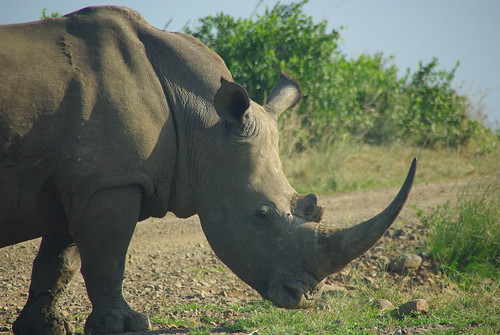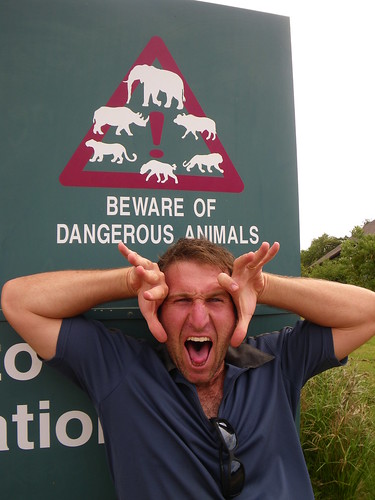 Most famous for its “Operation Rhino” program, Hluhuluwe-iMfolozi National Park is a conservation focused big game park. Home to a quarter of the world’s rhinocerous population, the park’s Operation Rhino has successfully brought the white rhino back from the brink of extinction. A little over 100 years ago only 20 white rhinos existed in the world, today the global population is closer to 13,000 with the entire world’s population originating from the conservation efforts at Hlhuluwe-Imfolozi park. That’s quite an accomplishment. The program is so successful that the park has had to move “surplus” rhinos to other big game parks across Southern Africa in order to maintain a manageable population for the park.
Most famous for its “Operation Rhino” program, Hluhuluwe-iMfolozi National Park is a conservation focused big game park. Home to a quarter of the world’s rhinocerous population, the park’s Operation Rhino has successfully brought the white rhino back from the brink of extinction. A little over 100 years ago only 20 white rhinos existed in the world, today the global population is closer to 13,000 with the entire world’s population originating from the conservation efforts at Hlhuluwe-Imfolozi park. That’s quite an accomplishment. The program is so successful that the park has had to move “surplus” rhinos to other big game parks across Southern Africa in order to maintain a manageable population for the park.
The story of the white rhinocerous is like the story of so many species over the years, only it appears to have a happy ending. With the white rhino population steadily rising, the park has now begun to focus its conservation efforts on the black rhino who has suffered extreme dwindling numbers due to poaching over the last decade. Estimates indicated that in the last decade the number of black rhino has fallen from 14,000 to 1550 due mainly to poaching.
Poaching, surprisingly still exists in the big game parks in South Africa. In fact, a guide at Kruger National Park told us that last year Park Rangers found the carcases of 30 poached rhinos. Like elephant poachers which only take the tusks of the animal, rhino poachers remove only the horns, which can fetch up to 10,000 USD on the international market. Although international awareness against poaching increases every year, there continues to be great demand for rhino horns which are believed to cure infertility in some cultures.
 Rangers often find the remains of animals, not the poachers themselves, especially at trans-frontier parks like Kruger where poachers can enter and exit the area from different countries. A very shocking set of images at Kruger Park didn’t need captions to describe the cruelty and brutality of the snares and traps used by poachers.
Rangers often find the remains of animals, not the poachers themselves, especially at trans-frontier parks like Kruger where poachers can enter and exit the area from different countries. A very shocking set of images at Kruger Park didn’t need captions to describe the cruelty and brutality of the snares and traps used by poachers.
With so much at stake, successful conservation programs like that at Hluhuluwe-Imfolozi will only become more and more important in the preservation of species and the enviroment. Hopefully the example set by Hluhulhwe will serve to spur serious animal conservation efforts not only in Africa with the big game, but also in our own country, to protect smaller species.
great story. I especially like the picture of the floridian lion moose. Those are so rare, its awesome that you could capture on ‘film’. 🙂
@Ponch- the floridian lion moose is extremely rare, but it seems to always be where I am. Few pictures exist of its ferocious canines. I was lucky to get it on film. 🙂
Haha this picture is hilarious and so are the comments very clever!